A Custom Generator Enclosure case study
Taunton Light Plant
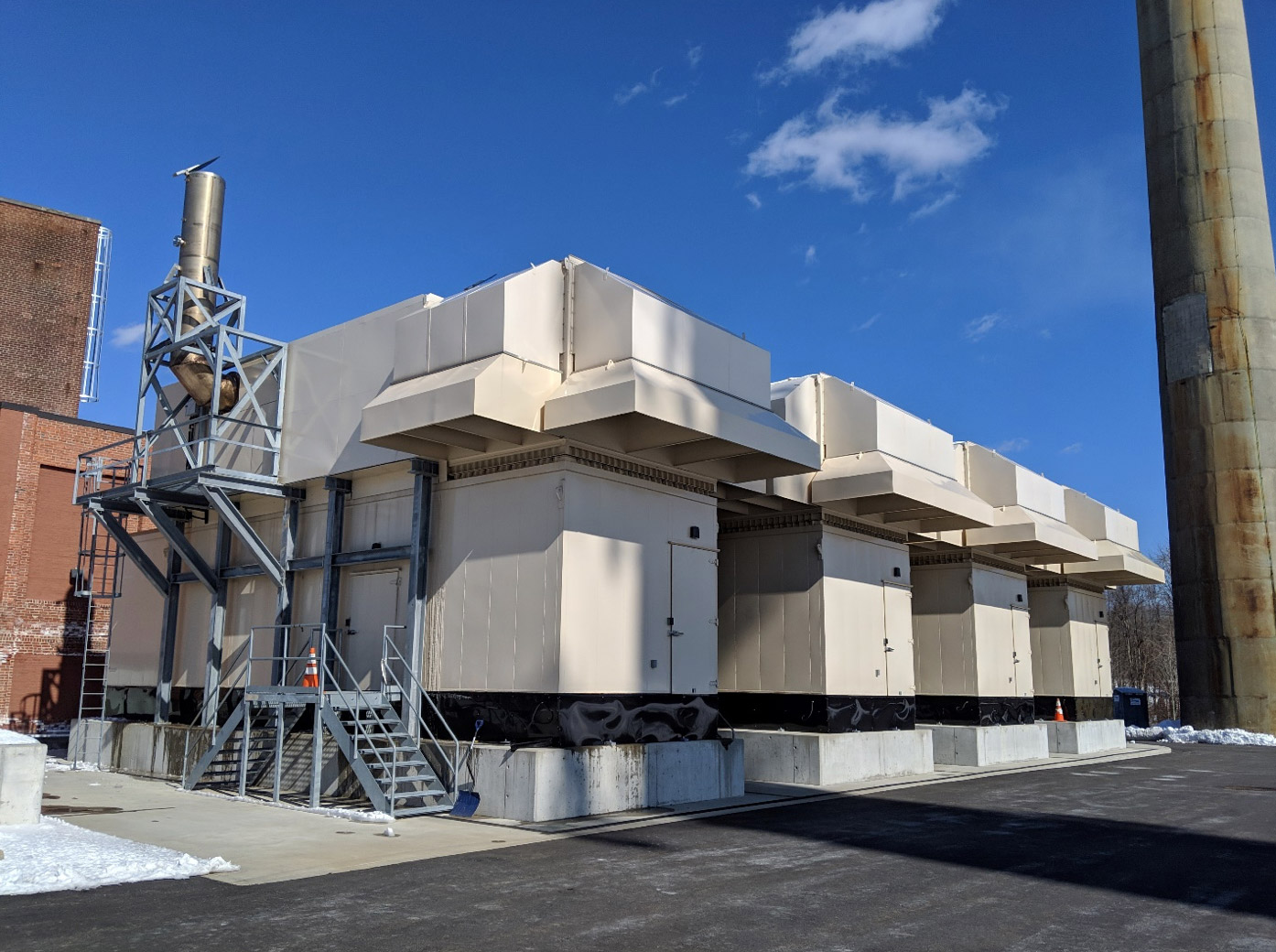
Peak Power Shaving Generators
Diesel Generator noise control (retrofit solution)
Applying a resiliently mounted CLD acoustic wall system to mitigate an underperforming generator enclosure.
The Project Facility
Public utility station
The Noise Source
Peak Power Shaving Natural Gas Generators
The Solution
Resiliently Mounted Acoustic Wall System
PMA-3-HTL-CLD acoustic panel
The Project Team
Public Utility
Equipment OEM
Acoustic Consultant – Acentech
Reason for Mitigation:
State ordinance; Compliance with local regulatory limits for exterior noise emissions
Project Challenges
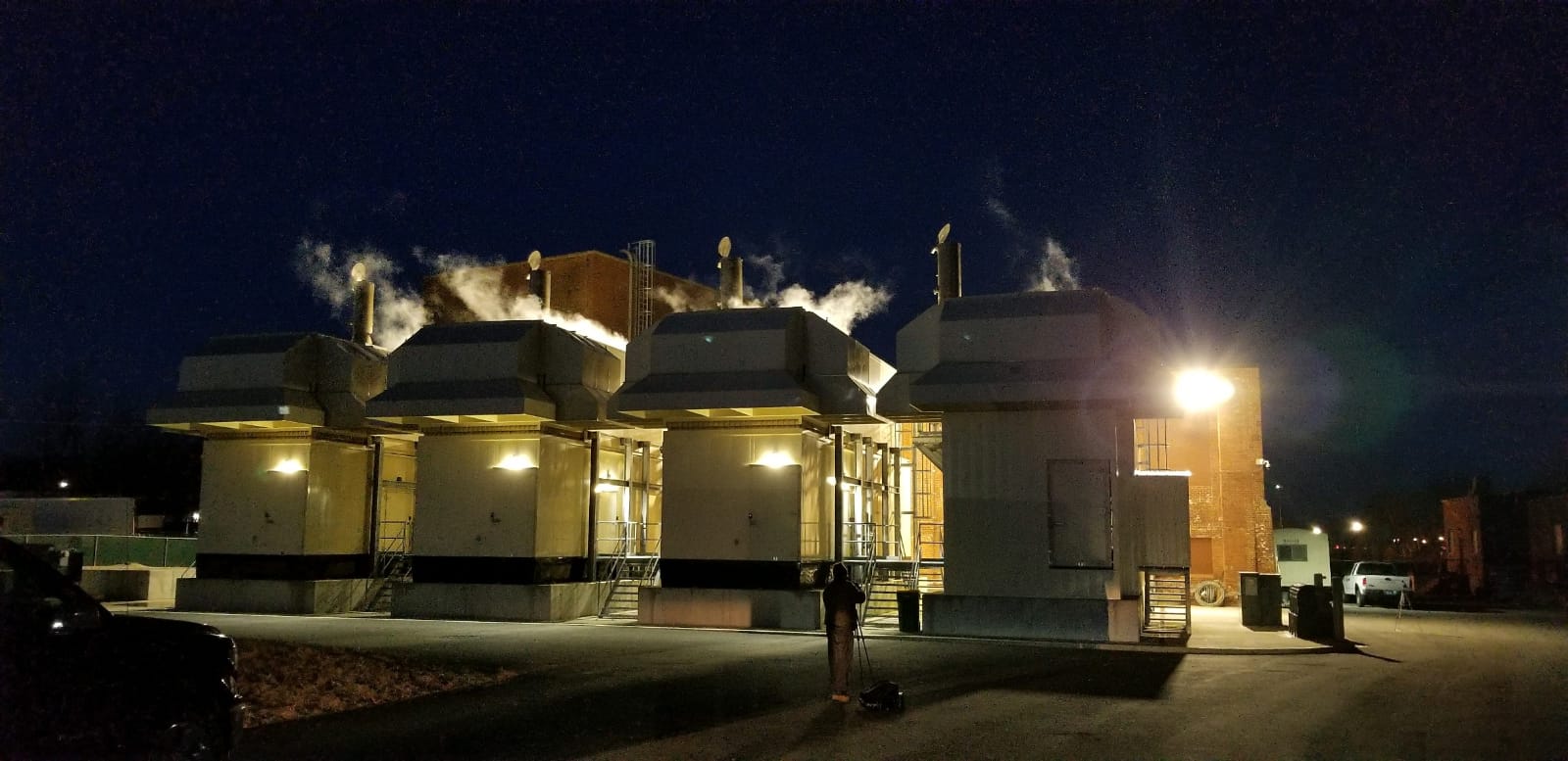
Acoustic Performance
Through the detailed analytical efforts of the acoustic consultant engaged on the project, it was discovered that the acoustic deficiencies were primarily caused by insufficient transmission loss in the enclosure casing around the generator set. Inadequate mass (i.e., to attenuate lower frequencies) and vibratory transmission into the wall panels were additional causal factors.
Site Fitment
Our team would need to design an at-source solution that would address the shortfall in acoustic performance, while overcoming the major cost and functionality concerns. Integrating this type of solution would entail precise field measurements enabling us to work around the various openings and appurtenances affixed to the unit.
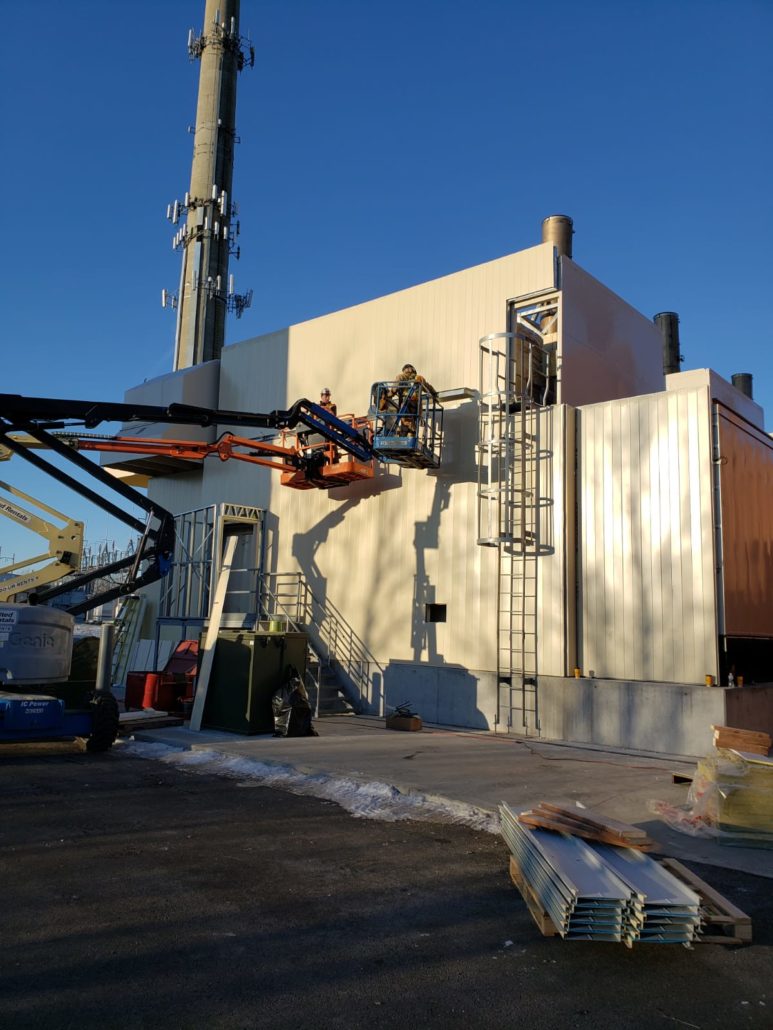
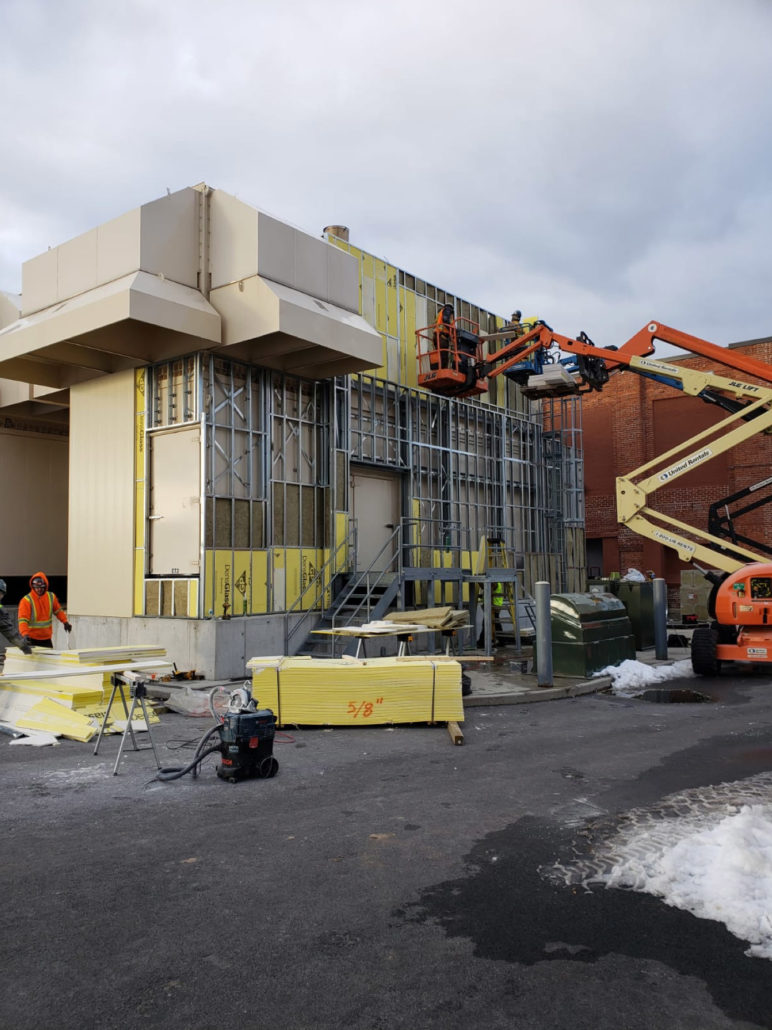
Time
Project Solution
Collaborative design and Installation
The project team would construct and install a built-up vibration isolated acoustic wall panel on the east and south wall of the fourth generator. An external steel stud wall was constructed in front of the existing enclosure, then pinned back to the enclosure structure using a grid of neoprene wall mounts. The new acoustic panel was laid into the decoupled stud wall and finished with an architectural cladding system.
Cloud Modeling
Instead of attempting to manually capture all of the small details on this large system to address the site fitment issues, we used long-range laser scanning to generate a detailed point cloud model of the entire equipment set. This virtually eliminated the need for extensive on-site measurement. All detailed design was completed by Parklane’s in-house engineers and CAD technicians, using the 3D-point cloud model created in this single scanning process.
Logistics


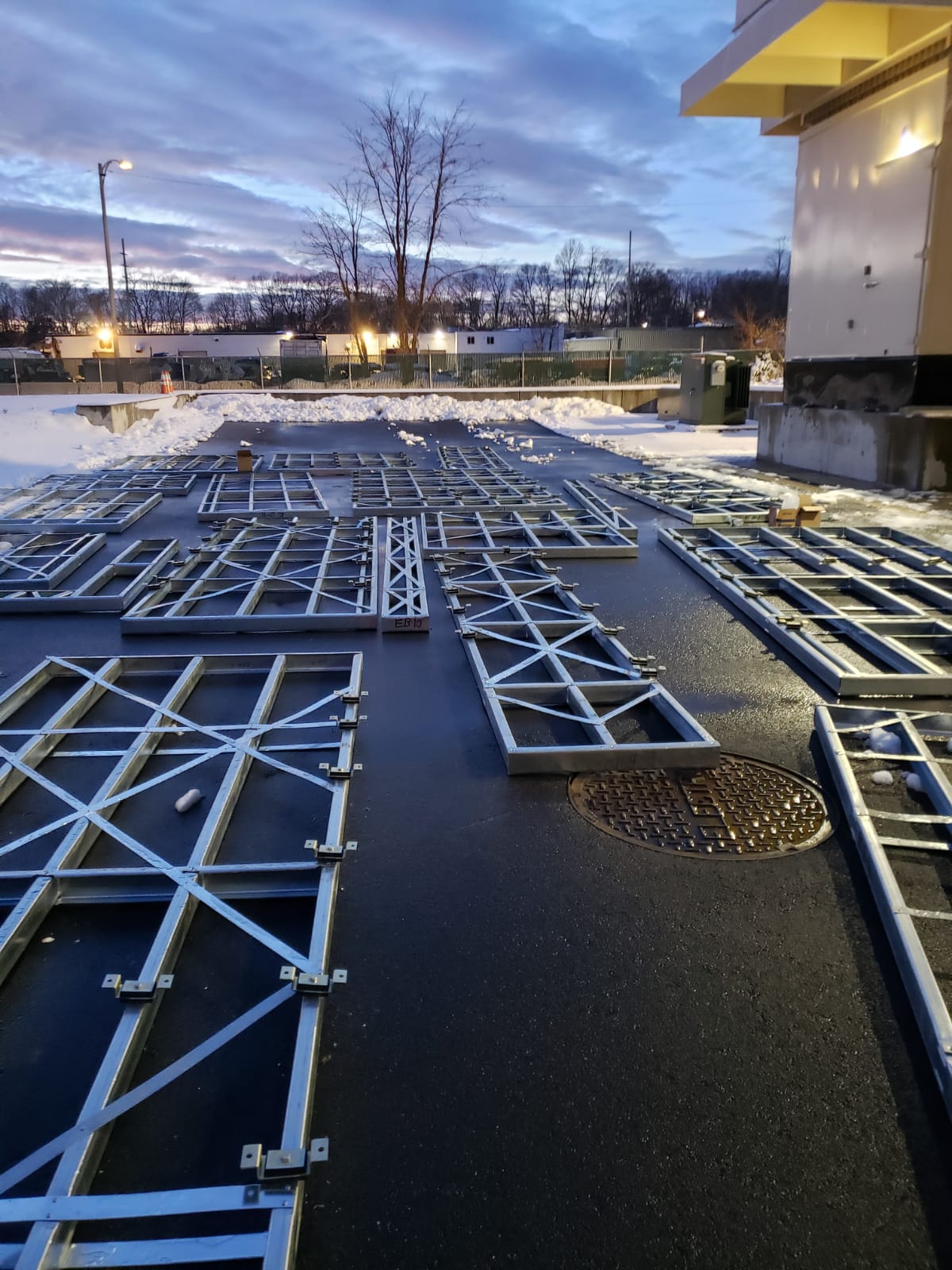
Results
By moving to this innovative at-source approach, we avoided the addition of foundations or any major substructure. This alleviated site congestion concerns, and reduced the cost of the project to about 25 per cent from the original proposal. Through extensive collaboration with the acoustic consultant, we were able to successfully reduce the Taunton plant’s noise emissions to within local ordinance limits in 10 days, achieving our project objectives efficiently and with no impact on the plant’s operations.
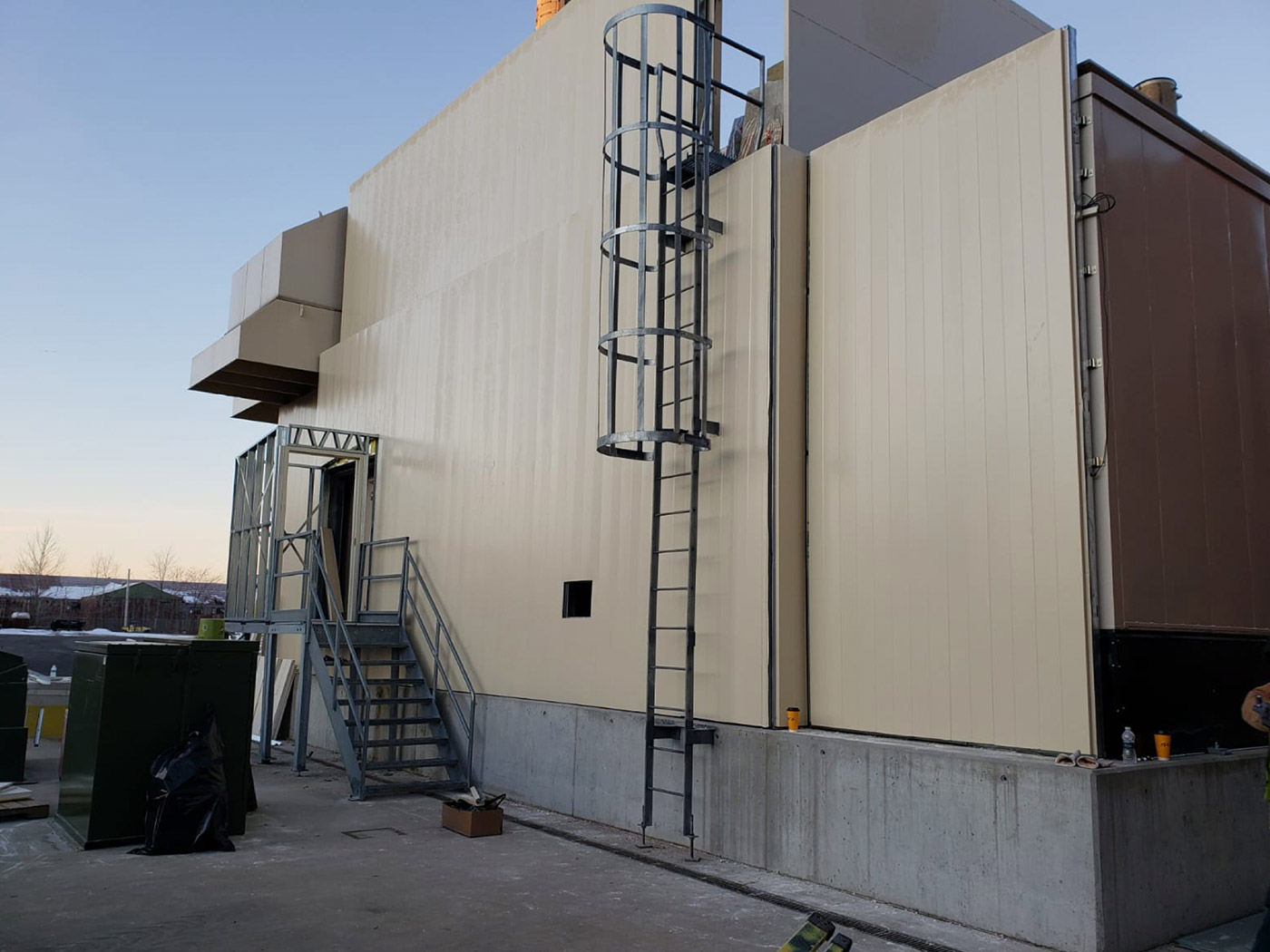
Read the full story
Find out how we helped the Taunton Light Plant achieve regulatory compliance.

Let's work together
Contact a member of our team now to find out how Parklane can help provide an effective, customized solution to your organization’s noise control challenges.

